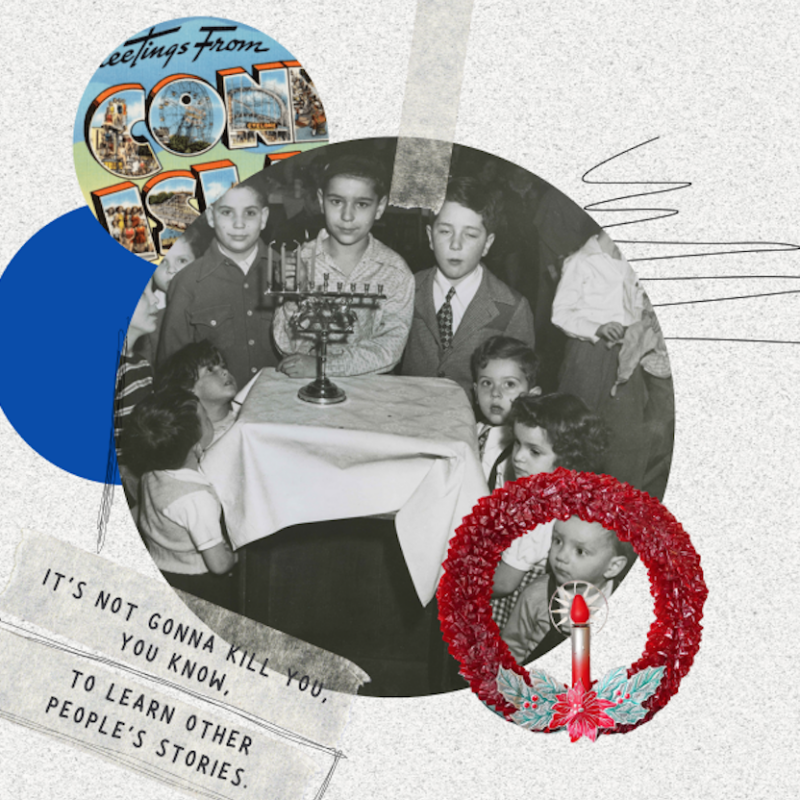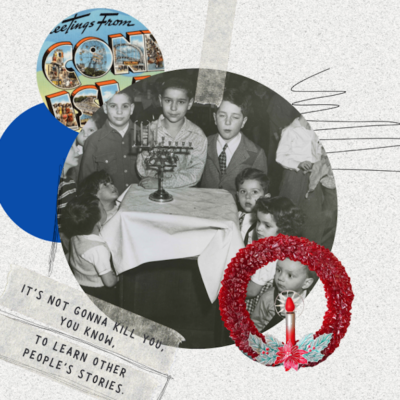Nearly five years later, United 93 has risen from the ashes, only to return to ash all over again. United 93, Paul Greengrass’ minute- by-minute account of a flight that some have called the opening battle in the War on Terror, is as harrowing an experience as the average moviegoer could possibly ask for. Using documentary techniques that he wields with consummate skill, Greengrass puts us on board the Boeing 757, with its 44 passengers and crew members, including four Middle Eastern gentlemen who—although they’ve bought one-way, first-class tickets—arouse little suspicion. The passengers’ apathy is understandable: It’s been years since anybody hijacked an airplane, and even longer since a hijacking resulted in widespread fatalities. As the tragedy unfolds, we’re the only ones who know that these particular hijackers aren’t interested in a ransom or the release of prisoners. They want the plane itself—a guided missile, a weapon of mass destruction.
By adding us to the passenger list, United 93 puts us in a peculiar position: We know what’s going to happen before it happens, and there’s absolutely nothing we can do about it. This creates the exact opposite of suspense—instead, we feel an overwhelming sense of dread, as in a recurring nightmare. And you have to wonder why anybody would want to put himself through this. Wasn’t it bad enough the first time around? “Too soon!” New Yorkers reportedly yelled at the screen when the movie’s trailer ran before showings of Spike Lee’s Inside Man. Manhattanites are the hibakusha of 9/11: survivors of the closest this country’s ever come to having an atomic bomb dropped on it. But do you have to live within spitting distance of Ground Zero to ask whether it might be too soon for a movie like United 93? Might it, in some ways, always be too soon?
That depends, in part, on what kind of movie United 93 is. To all outward appearances, it’s a docudrama—a dramatic re-enactment told almost in real time. And Greengrass has gone to extraordinary lengths to be as faithful as possible to what actually happened. But what actually happened? All we have to go on are the flight-data recorder, the cockpit voice-recorder, control-center monitoring data and transcripts of phone calls made by the passengers and crew members to family, friends and colleagues. As voluminous as that sounds, it actually provides only a sketchy account of what happened during United 93’s 84 minutes in the air. Did the passengers storm the cockpit after realizing they were on somebody else’s suicide mission? Did they down the plane? Did Todd Beamer lead the Charge of the Flight Brigade after shouting “Let’s roll!”?
Possibly. President Bush certainly thought so, using Beamer’s lock-and-load moment as a rallying cry from here to Afghanistan and beyond. The 9/11 Commission thought not, although by then it was too late; United 93 had lifted off into the realm of myth. What at first had seemed like “that other plane that got hijacked that day” was now “The Flight That Fought Back”—the actual name of a documentary aired on the Discovery Channel last September, narrated by Kiefer Sutherland and featuring techniques—splitscreens, elapsed-time readouts—used on “24.” Acknowledging the gap between how it was and how it might have been, Sutherland called the documentary “informed speculation.” Likewise, Greengrass has claimed he was going for “a believable truth,” which is another way of saying the same thing.
But just how many believable truths are there? One? Ten? A multitude? And how do we know where “truth” ends and “a believable truth” begins? Is this how it was on Flight 93, or is it how we want it to have been? Has Greengrass snatched a victory from the jaws of defeat, à la Schindler’s List? Does he even have an agenda? Or is he, like everybody else that day, trying to get by on a wing and a prayer?
The movie opens with a prayer…in Arabic. Two of the hijackers, holed up in a hotel room, have begun their morning ablutions and absolutions. It would have been so easy to demonize these religious fanatics, with their shouts of “Allahu Akbar” (God is great). Instead, Greengrass humanizes them, though only enough to let us know they are human. Early on, he focuses on Ziad Jarrah, who will pilot the plane after the other terrorists have taken it over. A welldressed, well-educated young man from a well-off, well-respected Lebanese family, Ziad may have had some reservations about his mission—but did he really come close to aborting it, as he appears to do here? Or does Greengrass simply want to show us that the terrorists, though fanatically devoted to their cause, are also nervous as hell?
No one else is, of course. At first, September 11 was just another day for the passengers and crew members of Flight 93—an easy day for the crew, given that only 37 of the 182 passenger seats were taken. (“Love these light loads,” one flight attendant says to another.) And Greengrass seems mesmerized by the sheer banality of the airplane’s routine: the pre-flight checklists, the last-minute boardings, the inevitable delay, which puts United 93 on its “fourth plane” timeline. The dread, there from the beginning, slowly builds as everybody prepares for takeoff. They don’t know they’ve been recruited for a Jihad vs. McWorld showdown—although there have been hard-to-detect omens, like the word “FLAMMABLE” emblazoned on the plane’s side. And elsewhere in the sky, an American Airlines jet has veered off course.
Greengrass splits his time between the cockpit and cabin of United 93 and the various command centers that were watching a nightmare unfold before their eyes via blips on a screen. The Tom Clancy-like jargon contributes to the reality effect, as does the use of actual airline personnel: two pilots, a flight attendant and Ben Sliney, who reprised his role as the FAA’s operations manager. (It was his first day on the job.) As for the passengers, they’re played by largely unknown actors, most of them members of New York’s theater community—a departure from the usual disaster-film practice of hiring faded movie stars. And, since Greengrass doesn’t individualize the passengers very much (he doesn’t give them character arcs, or even names), we don’t get to know them any better than they get to know each other.
Compare that to Flight 93, A&E’s entry in the 9/11 docudrama sweepstakes, which aired in January. Though brutal by made-for-television standards, it found a silver lining in the phone conversations by which the passengers and crew first figured out what was going on, then bid adieu to their loved ones. In contrast, Greengrass doesn’t make us privy to the other sides of those conversations, safely on the ground. And it’s nice to be spared the heartstring-tugging sentimentality. Instead of a series of snapshots, like Flight 93, United 93 is a group portrait: folks caught in a situation so frantic that there’s little time to decide who’s a hero and who’s a coward, whatever that means under the circumstances. As far as this movie’s concerned, the passengers and crew were (wait for it) united in their decision to fight back.
And maybe they were. What’s more important, as far as drawing lessons from the events of that fateful day goes, is the lack of communication among the various control centers. In their defense, few had ever imagined commercial jetliners being used as missiles. Then again, why hadn’t they? And why were so many of their debriefings courtesy of CNN? With Ben Sliney at the helm, the FAA’s command center in Herndon, Virginia, comes off smelling like a rose. And the air-traffic controllers in cities as far-flung as Cleveland seem to have had their jobs down. But the military chain of command appears to be made of paper, the links held together with glue. Who has shoot-down authority? And where are the planes to execute it? From United 93, you’d swear that Dr. Strangelove himself was in charge.
And so it’s left to the citizen-soldiers gathered at the back of the plane to defend themselves. By this point, Greengrass has done such a masterful job of capturing the confusion spreading up and down the Eastern Seaboard—the fast-spreading fog of war—that you may not notice exactly how the rebellion arises. Yes, Todd Beamer gets his “Let’s roll”—but it’s without the exclamation point. And there’s less a sense of Americans heroically taking matters into their own hands than of cornered rats biting at the heels of those who are preparing to stomp the life out of them. Did this ragtag band of John- and Jane-Q.-Publics put together a plan and execute it? Did they storm the cockpit? Did they try to grab the controls from Ziad Jarrah, who downed the plane rather than have it taken away from him? Nobody knows for sure, hence the need for “a believable truth.”
Still, Greengrass has been nothing if not generous in his interpretation of the available evidence. And when you think about it, what difference does it make whether this citizens brigade got inside the cockpit or not? Knowing they wanted to, and/or were about to, Ziad cancelled his flight a mere 20 minutes from Washington, D.C. Alas, he cancelled everybody else’s flight, too. But by forcing his hand, the passengers saved hundreds, if not thousands, of soccer lives. Or, as Los Angeles Times reporter Terry McDermott put it in Perfect Soldiers, his book about the 9/11 hijackers: “Flight 93’s passengers, armed with cell phones and pitchers of hot water, were able to effectively defend the nation’s capital in a way the national air-defense system could not.” President Bush, applying his reading skills to “The Pet Goat,” wasn’t the only one caught off-guard that day.
But he’s had plenty of time to catch up, and United 93 may be just the movie he’s been looking for, because it can be read as a call to arms. The passengers and crew were, as Greengrass has said in interviews, “the first people to inhabit the post-9/11 world,” having been told over the phone what happened at the World Trade Center and the Pentagon. And they didn’t exactly take the news lying down. But can this possibly be what Greengrass, who’s Irish, is up to? Rallying the troops? Strengthening our resolve? Or does he simply want to memorialize the victims, record a key moment in our country’s history? Either way, United 93 is the ultimate thrill ride—less fly-on-thewall filmmaking than fly-in-the-air filmmaking, the camera buzzing all over the place. But it’s so expertly shot and edited that we never lose track of where we are.
And we never lose sight of where we’re going: to a newly dug grave in rural Pennsylvania. If it weren’t for the fact that Greengrass secured the approval of each and every victim’s family (not one of which has had a bad word to say about the movie), the whole thing might seem exploitative—Airport with a snuff-film ending. The difference, of course, is that Airport wasn’t based on an actual hijacking, whereas United 93 is a meticulous re-creation of one of the darkest hours in aviation history. Five years later, 9/11 is finally starting to slide from topical to historical. Yet this is the first feature film to tackle the subject head-on. It may not be ripped from the headlines, but the headlines are still so fresh in our minds, it might as well be. Everybody said 9/11 was just like a movie. Well, here’s the movie it’s just like, for better or worse.
Until quite recently, it’s been seen as a bit of an afterthought, an also-ran—the Nagasaki of 9/11. News accounts at the time, when they mentioned it at all, called it “the fourth plane,” as if there’d been a race (which, in a weird way, there had been), and that was their finishing order. United 93, bound from Newark to San Francisco, was the last of the four to leave the ground that sunny morning in September, and the last to return to ground. It was also the only one of the hijacked planes that missed its target, whatever its target might have been: the U.S. Capitol, probably, or maybe the White House, but surely not a former strip mine in southwestern Pennsylvania. And by missing its target, it fell into the long shadows cast by the World Trade Center, even (especially) after the Twin Towers went up, then down, in smoke.





